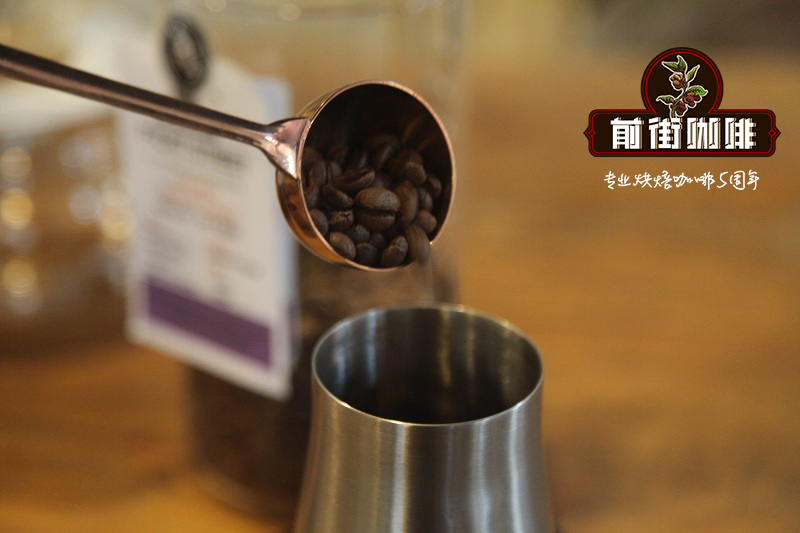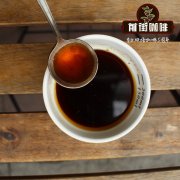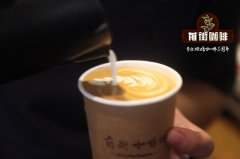Introduction to the planting History and varieties of Hawaiian Coffee Hawaii Coffee production area

Professional coffee knowledge exchange more coffee bean information please follow the coffee workshop (Wechat official account cafe_style)
History of Coffee cultivation in Hawaii
On Francisco de Paula Marin recorded in his journal in 1813 that he had grown coffee on the island of Oahu. The planting plan failed, but in 1825, Boki, the mayor of Oahu, brought coffee to Hawaii through a British warship called H.M.S. Blonde. The ship returned to Hawaii carrying the bodies of King Kamehameha and Queen Kamamalu, who died of measles in London during an official visit. Mayor Boki, who was in charge of the funeral, took coffee trees from Rio de Janeiro and shipped them back to Hawaii during his voyage. Coffee was first grown in the Manoa Valley valley of Oahu, and then slowly extended to other parts of Oahu and its neighboring islands. In 1828, the Reverend Samuel Ruggles planted coffee in the Naole area (now Captain Cook), above Kealakekua Bay on the Kona Coast coastline. These coffee trees grow luxuriantly because of moderate altitude, fertile soil and constant cloud cover over the years. The land is gradually increasing, and the local coffee is also more famous than other places. At that time, the export of coffee in Hawaii was mainly carried out by whale replenishment ships and merchant ships. In 1860, when the whale replenishment industry declined, Hawaiian coffee lost its main market. In 1870, sugar became a staple crop in Hawaii, and the market on the west coast gradually expanded to become a market between Hawaii and the United States. Move forward! To Honolulu from 1800 to 1900, Maui was an important stop for coffee ships to load and unload. Mara Wharf (Mala Wharf) is one of the main stops for ships sailing from the port of the old town of Kailua to the busy seaport of Honolulu. These ships tend to carry not only coffee, but also pineapples made by Baldwin canners who are engaged in canned packaging. This is where the present-day Lahaina cannery shopping center is located.
Hawaiian coffee is the only top variety produced in the 50 states of the United States. Because the planting area of coffee on the island is very small.
The annual output and limited quantity of coffee beans produced in Hawaii are of good quality. As a result, the price of coffee beans produced in this area will be higher than that of other coffee-growing countries.
Most coffee is grown on the slopes of Mauna Loa, where the soil is fertile and contains volcanic ash.
The pleasant climate of Hawaii is very suitable for growing coffee trees. There is plenty of rain and sunshine here, and there is no worry about frost.
Coupled with the natural peculiar phenomenon of "free shade" (freeshade) in this area, it provides the necessary shade for coffee trees.
With such superior natural conditions, the yield of Arabian coffee in Kona is higher than that of other plantations and has always maintained high quality.
Introduction to the classification of Kona production area
Kona (kona)
Kona production area is located in the Big Island, the most famous production area in Hawaii, world-famous. Coffee beans have a perfect appearance, and his fruit is extremely full.
The luster is bright, the coffee taste is rich and fragrant, and has the cinnamon spice flavor, the acidity is also balanced moderate, is the world treasure.
Kona classification
Kona coffee beans are graded according to the size of the beans. It is divided into Type 1 and Type 2.
Type 1 is a standard coffee bean, with two beans in each coffee fruit.
Type 2 is the exclusive adzuki bean (Peaberry).
Type 1: Kona Extra Fancy, Kona Fancy, Kona Number 1, Kona Select and Kona Prime according to the order from big to small.
Type 2: contains two grades of adzuki bean Kona Number 1 Peaberry and a smaller Kona Peaberry Prime.
Qianjie coffee: Guangzhou bakery, the store is small but a variety of beans, you can find a variety of unknown beans, but also provide online store services. Https://shop104210103.taobao.com
Important Notice :
前街咖啡 FrontStreet Coffee has moved to new addredd:
FrontStreet Coffee Address: 315,Donghua East Road,GuangZhou
Tel:020 38364473
- Prev

Costa Rica Aurora Manor introduces how to make Costa Rican coffee? Costa Rican hand punch
Professional coffee knowledge exchange more coffee bean information please follow Coffee Workshop (Wechat official account cafe_style) Aurora Manor is located in the Piedra Candela, Volcan producing area in the northwest corner of Chiriqu province, only two kilometers away from Costa Rica. The Aurora Manor has a total of 31 hectares, of which it is located at an altitude of 1700-1775 meters above sea level and is a rainforest reserve with an altitude of 1485-1700 meters.
- Next

Is the best coffee brand in Hawaii Kona? Which coffee is better in Hawaii?
Professional coffee knowledge exchange more coffee bean information please follow Coffee Workshop (Wechat official account cafe_style) Hawaii Hawaiian population: 1404000 Hawaiian coffee bean reputation mainly comes from Kona. If you like typical island coffee with less acidity, more consistency and less fruit flavor, other islands are also worth exploring. KONA, B
Related
- Does Rose Summer choose Blue, Green or Red? Detailed explanation of Rose Summer Coffee plots and Classification in Panamanian Jade Manor
- What is the difference between the origin, producing area, processing plant, cooperative and manor of coffee beans?
- How fine does the espresso powder fit? how to grind the espresso?
- Sca coffee roasting degree color card coffee roasting degree 8 roasting color values what do you mean?
- The practice of lattes: how to make lattes at home
- Introduction to Indonesian Fine Coffee beans-- Java Coffee producing area of Indonesian Arabica Coffee
- How much will the flavor of light and medium roasted rose summer be expressed? What baking level is rose summer suitable for?
- Introduction to the characteristics of washing, sun-drying or wet-planing coffee commonly used in Mantenin, Indonesia
- Price characteristics of Arabica Coffee Bean Starbucks introduction to Manning Coffee Bean Taste producing area Variety Manor
- What is the authentic Yega flavor? What are the flavor characteristics of the really excellent Yejasuffi coffee beans?

